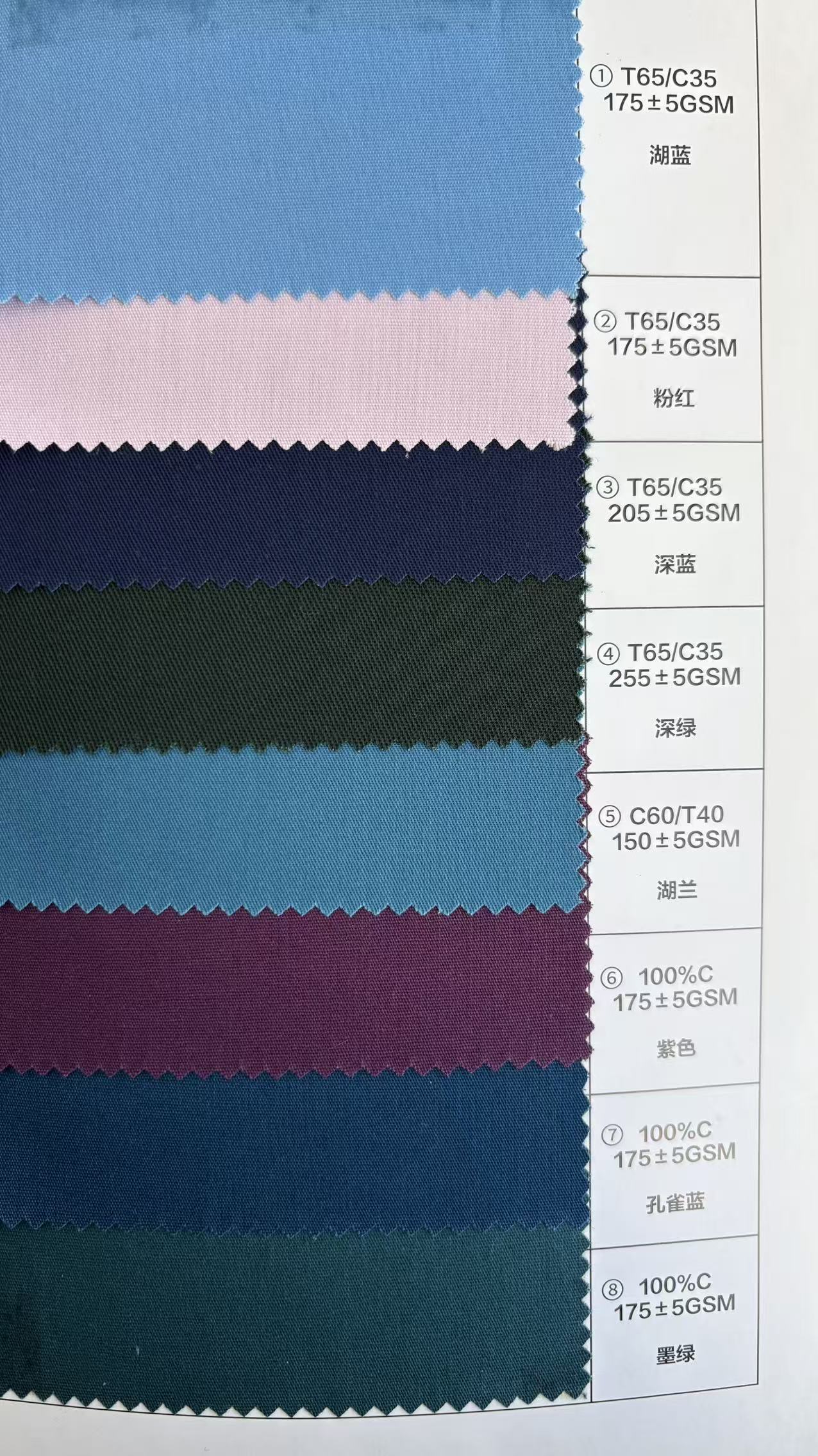In the healthcare industry, fabrics go through a lot more than just regular wear and tear. Between daily use and aggressive disinfection cycles—especially those involving chlorine bleach—many textiles just don’t last.
If you’ve ever seen faded scrubs or blotchy surgical drapes after a few washes, you’ll know what I mean. That’s where chlorine bleach resistant fabrics come in, and in this post, I’ll share what makes them different, how we improve their performance, and where they’re most useful.
Chlorine bleach resistant fabrics are designed to hold up under repeated washing with sodium hypochlorite. The key is in the dyeing and finishing process—using chlorine-resistant dyes and chemical treatments that protect the fiber and color. This helps medical uniforms and hospital textiles stay sharp and professional, even after high-concentration industrial laundering.
Let’s dive into the details—from practical problems we’ve seen in the field to how we solve them in production.
Why Do Medical Fabrics Need Chlorine Bleach Resistance?
In hospital laundry, disinfection often means using sodium hypochlorite—a strong oxidizer that’s great at killing germs but rough on fabric. We’ve had plenty of clients come to us with the same problem: their scrubs or sheets started fading, turning yellowish, or developing weird patches after just a few washes.
The issue usually isn’t the base fabric—it’s how it’s dyed and finished.
When chlorine reacts with regular reactive dyes, it breaks down the bond between the dye and the cotton fiber. That’s what causes fading or those uneven “cloudy” spots. If you want fabrics to hold their color, especially at bleach concentrations around 2000ppm, you need something more specialized.
What Scrubs Are Truly Bleach Resistant?
Now, I know there are a lot of scrubs out there that claim to be “bleach safe.” But in my experience, you have to look beyond the label.
What really matters is whether the fabric is dyed with chlorine-resistant dyes, and whether it’s gone through the proper finishing process. Without that, even poly-cotton blends will fade after a few industrial washes.
That said, there are some professional-grade scrub brands out there doing it right. Here are a few I’ve come across:
🇺🇸 U.S. Brands:
- Barco One – Lightweight, wrinkle-resistant, and holds up well in industrial laundry.
- WonderWink INDY™ – Designed for facilities that use bleach-based disinfection regularly.
🇪🇺 European Brands:
- Alsico – They supply many European hospitals and know how to meet ISO standards.
- MASCOT® WORKWEAR – More known for industrial wear, but some of their products are bleach-resistant and used in labs or food processing.
Of course, if you’re buying in bulk, I’d always recommend getting samples and asking for test reports—AATCC 188 is a good place to start.
What Fabrics Are Commonly Used in Hospitals?
Most of what we see in hospitals is made from polyester-cotton blends, typically:
- 65% polyester / 35% cotton
- 60% cotton / 40% polyester
These blends are popular because they balance durability, comfort, and cost. Some buyers still prefer 100% cotton, especially in warmer climates or for specific garment styles like surgical gowns.
But again, without chlorine resistance built into the dyeing and finishing process, none of these materials can survive industrial bleaching for long.
How Do We Improve Chlorine Bleach Resistance in Cotton Fabrics?
This is something we’ve worked on a lot in our production. Improving chlorine resistance comes down to two main things:
- Using the right dyes – We go with chlorine-resistant reactive dyes that don’t break down when exposed to sodium hypochlorite.
- Adding chemical protectors during finishing – These agents “intercept” the active chlorine so it doesn’t attack the dye-fiber bond.
By doing this, we’ve been able to achieve Grade 3–4 or even 4 colorfastness under the AATCC188-2010 test method. That’s with washing at 2000ppm bleach concentration, which is no joke.
At WUHAN PRANCE I&E CO., LTD, we apply this process to both 100% cotton and T/C blends, mainly for our clients in medical, food, and chemical industries. The feedback’s been solid—less fading, longer garment life, and lower replacement costs.
Where Are Chlorine Bleach Resistant Fabrics Commonly Used?
We’ve supplied this kind of fabric for all sorts of applications over the years. Here are the main ones:
- Surgical scrubs and gowns – Washed almost daily in strong disinfectants.
- Drapes and wrapping cloths – Exposed to sterilization, bleach, and high temps.
- Hospital bedding and sheets – Need to stay looking clean and professional.
- Food industry uniforms – Regular bleach washing in food processing plants.
- Lab coats and coveralls – Used in chemical environments with frequent cleaning.
In these scenarios, ordinary fabric just can’t hold up. Investing in bleach resistance from the start saves a lot of headaches down the line.
What Certifications Should You Look For?
If you’re sourcing bleach-resistant fabrics, always ask for test results. These are the standards we usually refer to:
- AATCC 188-2010 – Simulates household bleach washing and checks for color change.
- ISO 105-N01 – Measures how well fabric holds color after bleaching.
- AATCC 61 – Tests general colorfastness during laundering.
Even if you’re not in the U.S., these are solid benchmarks to compare products from different suppliers.
Final Thoughts
Chlorine bleach resistant fabrics aren’t just a nice-to-have—they’re essential if you’re working with medical or industrial garments that face regular disinfection. We’ve spent years refining our process to help clients keep their uniforms looking clean and lasting longer.
If you’re looking for reliable, tested, bleach-resistant fabrics for scrubs, gowns, drapes, or anything else, feel free to reach out :
👉 sales@ripstopfabric.com
Happy to share test reports, sample swatches, or just talk shop.


